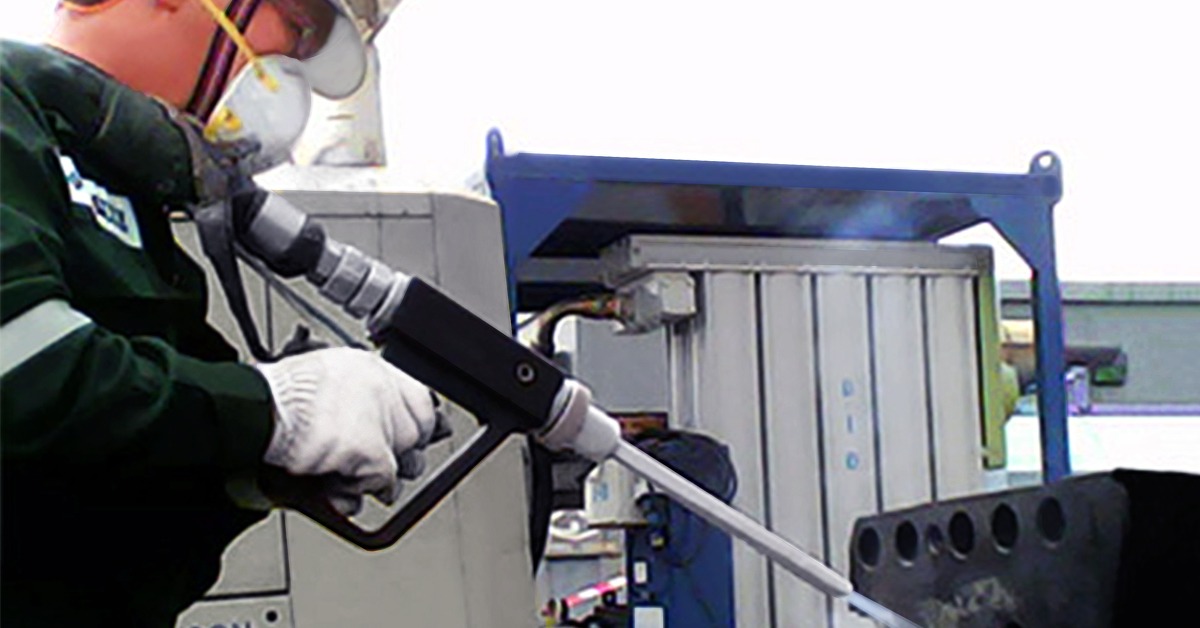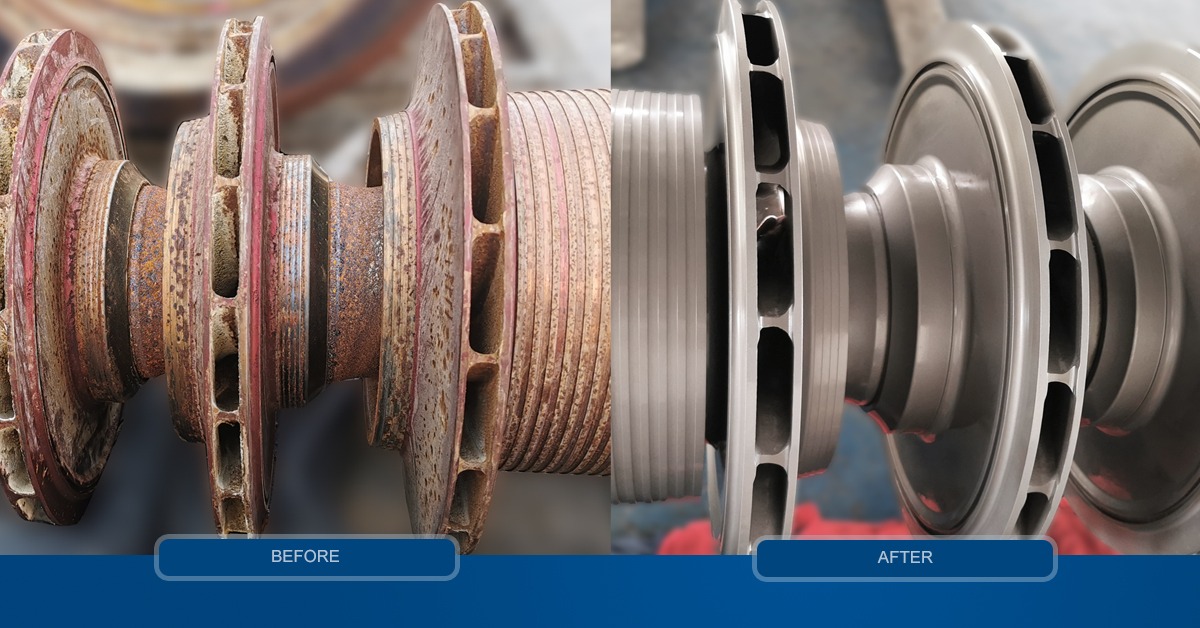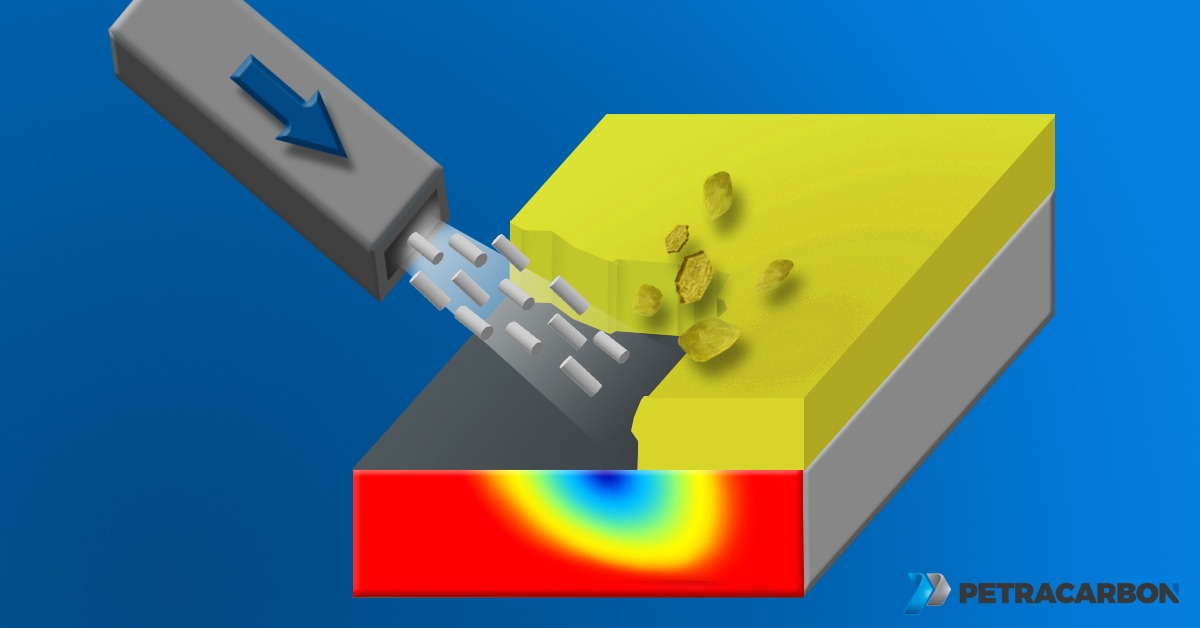Dry Ice Blasting + Glass Beads
Dry Ice Blasting with Glass Beads

Dry Ice Blasting is a method similar to media blasting where garnet, glass beads or soda are carried by the compressed air stream and directed at high velocity through a nozzle towards the object. However, in the dry ice blasting method instead of abrasive media, dry ice (solid CO2) pellets are used.
Petracarbon Services International (PSI) can deliver real benefits to your company. The operational efficiency of dry ice blasting can be beneficial to many different sectors, such as:
Petrochemical industry
Power generation
Food & beverage manufacturing
Plastic and rubber industries
Vehicle manufacturing
Printing and packaging industry
Building & infrastructure maintenance
Marine industry
Foundry and casting
Pharmaceuticals
Others
Dry Ice Blasting can be used to remove a wide variety of production residues and accumulated deposits such as carbon, various oxides, salts, rust and corrosion, release agents, chemical deposits, grease/oils, bio-films, adhesives, polymers, paints and coatings, powders, chemical spills

The Technology

Dry ice cleaning is a novel technology well suited to a diverse range of applications found in most of the industrial sectors. It is an environmentally friendly alternative to conventional industrial cleaning practices and during the recent years has seen rapid expansion on a global scale owing to its advantages.
What We Use

Dry ice is the solid phase of Carbon Dioxide (CO2) and is produced through extrusion process by a dry ice pelletizer machine. Liquid CO2 is injected into a cylinder where it flashes into CO2 snow and CO2 gas. Snow is then compressed by a piston and extruded through a die plate forming long strands which upon falling into the storage container break to form rice like pellets. The diameter of dry ice can be 3mm, 9mm or 16mm. For cleaning the 3mm size is used.
Dry Ice Characteristics
Size: d=3mm
Hardness: 1.5-2 Mohs
Temeperature: -78.5 Celsius,
Characteristics: colourless, odourless, non-flammable, does not contain water, non-conductive
How It Works
The process is similar to traditional media blasting, however, instead of using hard abrasives such as grit, slag or glass/plastic beads, it employs the power of solid carbon dioxide (CO2) pellets. They are carried by a stream of compressed air and directed at high velocity through a nozzle towards the contaminant layer.
The differences between the two methods is: immediately upon impacting the object, the dry ice pellets sublimate into CO2 gas; no surface profile is created, usually there is no increase in the surface temperature, no peening effect and mechanical stress.

3 Main Effects In The Cleaning Process

Pellet Kinetic
The speed and mass of the dry ice pellets delivered to the surface of the contaminant through compressed air generate kinetic energy which is transformed into cleaning force.

Thermal Shock
The sudden local cooling generates high shear stress. The bond between the contaminant layer and substrate is loosened significantly which accelerates the removal process.

Sublimation
The dry ice pellets sublimate into gas upon hitting the surface. The gas expands to nearly 800 times the volume of the pellet in a few milliseconds thus producing”Micro-explosions”.
Advantages of Dry Ice Cleaning with Glass Beads
Quicker and Easier to Use
✓ Cleaning with dry ice can be done in significantly less time compared to a number of conventional cleaning processes.
✓ Lesser or no time is spent on-site containment compared to abrasive blasting /hydro jetting
✓ Preventive maintenance or spot cleaning can be done more frequently without impacting production.
Increased Revenue
Dry ice blasting helps to reduce shut-down time as many types of equipment can be cleaned on-site without disassembly, while hot and even when the machinery is still in operation. Less offline time means increased production time resulting in better revenue.
Increased Asset Life
✓ An experienced blaster is unlikely to damage equipment components and object surfaces.
✓ No substrate material is removed during cleaning, only the accumulated deposits/contaminants. The surface thickness of modules and component is not affected
✓ More regular, thorough and effective cleaning is an important part of a proactive asset management strategy.
A Safer Cleaning Method
✓ Eliminates exposure to toxic cleaning materials
Eliminates the risk of heavy injuries which can happen during high pressure hydro jetting
✓ Dose does not require mandatory supplied breathing air (as traditional abrasive blasting does)
✓ Can be used safely in confined space and work-at-height projects
Eliminates the risk of cuts, pinches, bumps into hard objects associated with the repetitive manual cleaning motions on complex production machinery
✓ There is no surface temperature increase (unlike abrasive blasting) and the CO2 gas acts as a fire suppressant
✓ Can be used on electrical equipment
Environmentally Sustainable
✓ Dry ice pellets are made of by-product CO2 reclaimed from industrial processes; no fuels are burned specifically to produce dry ice;
✓ There is no generation of contaminated secondary waste (such as spent abrasives or hydro jetting effluents, chemical cleaning effluents)
Why choose Petracarbon Services International (PSI)?
✓ Our experienced blasting team has a comprehensive track record with a wide range of industrial customers
✓ We use brand name dry ice blasting machines and high-density dry ice pellets to provide the very best outcomes
✓ We have exemplary safety record and are recommended by various clients
✓ We provide nationwide services with fast response time
